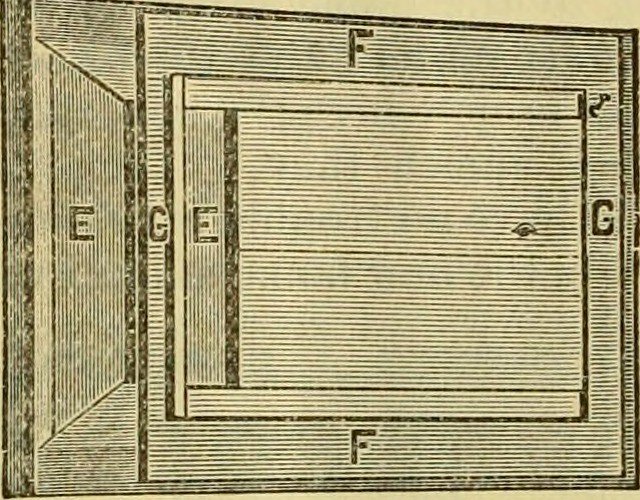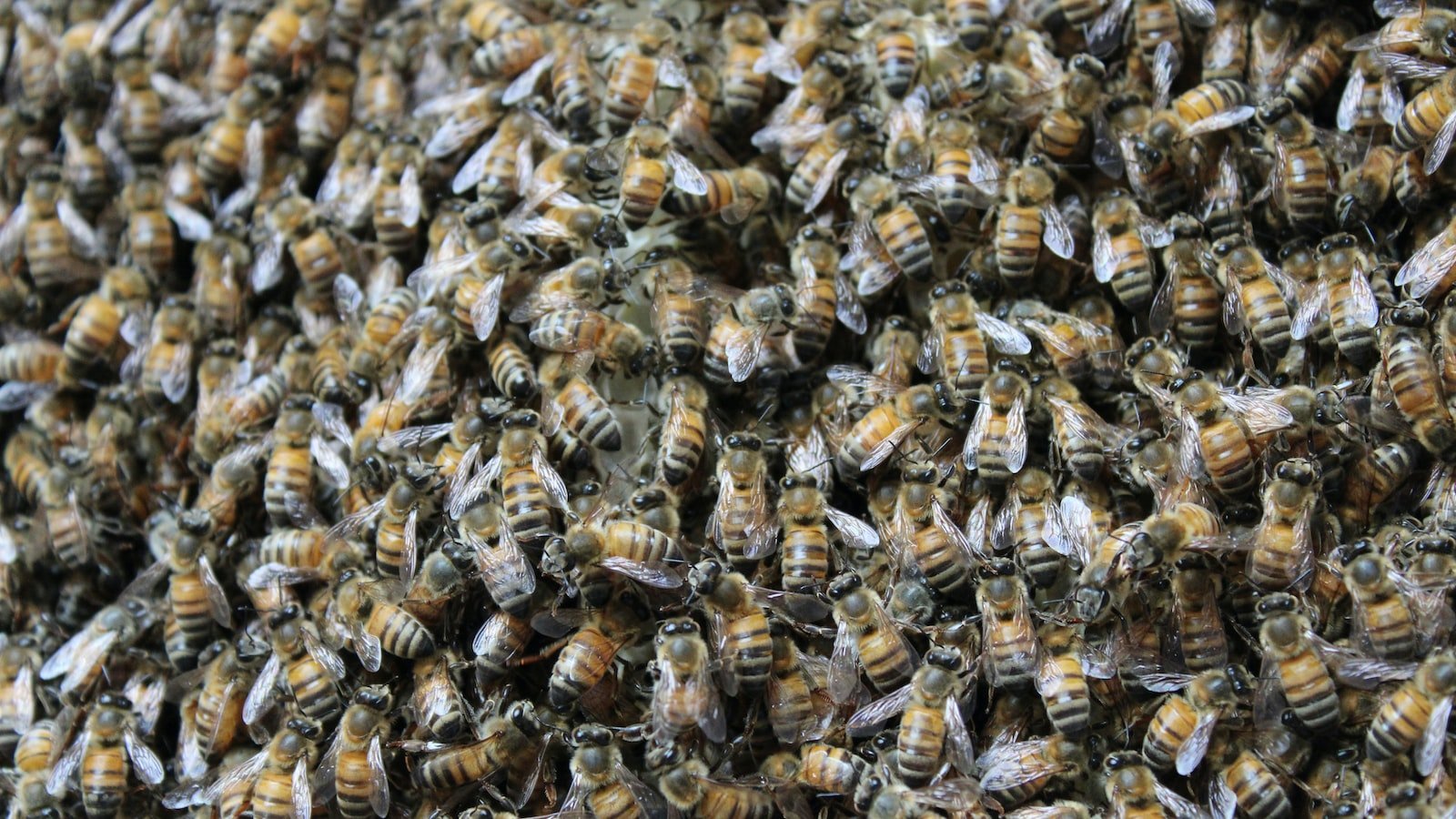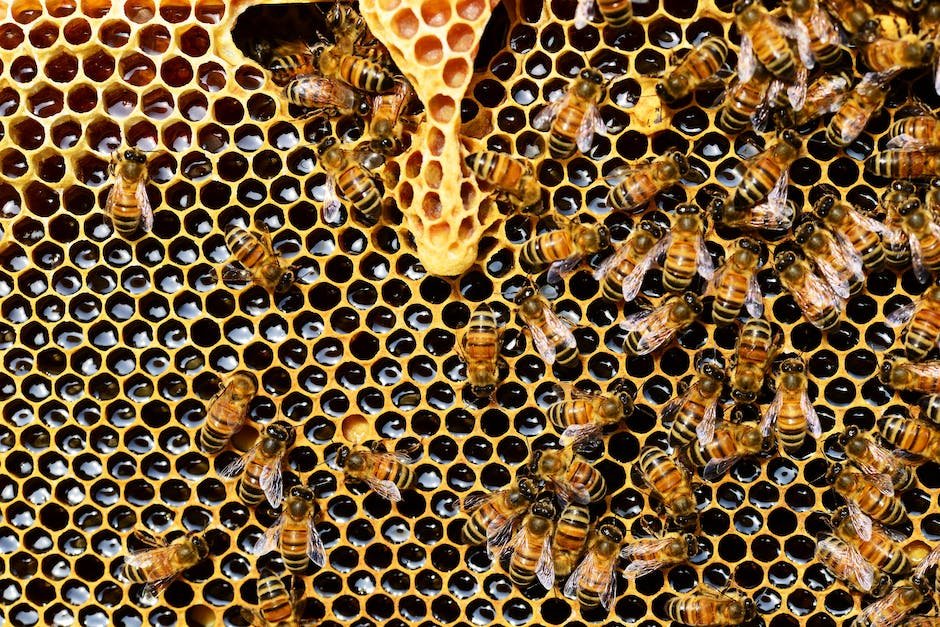Imagine you are a diligent little worker bee, buzzing around the hive, tirelessly toiling to keep things running smoothly. You’re diligently tending to brood cells, nurturing larvae, and collecting pollen with unwavering dedication. But as you buzz your way through the hive, have you ever stopped to ponder the significance of proper ventilation? Hive ventilation is the secret ingredient that keeps your colony thriving, yet it remains an often-overlooked aspect of beekeeping. So, dear beekeepers and fellow buzzing enthusiasts, let us embark on a journey to uncover the hidden wonders of hive ventilation, as we delve into a treasure trove of tips and tricks to ensure a breath of fresh air for our buzzing friends.
Table of Contents
- Understanding the Significance of Proper Hive Ventilation
- Key Factors to Consider for Effective Hive Ventilation
- Effective Techniques for Improving Hive Ventilation
- Common Mistakes to Avoid When Ventilating Beehives
- Expert Recommendations to Optimize Hive Ventilation
- Q&A
- Future Outlook

Understanding the Significance of Proper Hive Ventilation
Hive ventilation plays a crucial role in the overall health and productivity of a bee colony. It is essential for beekeepers to recognize the significance of maintaining proper ventilation within their hives, as it directly impacts the well-being of the bees. Without adequate ventilation, various issues can arise, potentially jeopardizing the colony’s chances of survival.
The importance of proper hive ventilation can be understood through the following key points:
- Regulating Temperature: Adequate airflow helps bees in regulating the internal temperature of the hive. Just like humans, bees require a comfortable living environment. Proper ventilation allows heat and moisture to be released, preventing overheating during scorching summer days and reducing condensation buildup during cold winter months.
- Preventing Diseases: Maintaining proper ventilation minimizes the risk of diseases and pests within the hive. Stagnant air can create a breeding ground for harmful microorganisms and mites, leading to the spread of contagious diseases among the bees. Adequate ventilation discourages the growth of these pathogens, promoting a healthier and more resilient colony.
- Improving Honey Production: Bees need a well-ventilated hive to generate honey efficiently. Proper airflow helps with the evaporation of excess moisture within the hive, a crucial step in the honey-making process. Without ventilation, excess humidity can negatively impact honey production, potentially reducing the amount and quality of honey.
empowers beekeepers with the knowledge to create an optimal living environment for their beloved bees. Beyond the benefits mentioned above, good ventilation also supports proper brood development, reduces stress on the bees, and aids in effectively dispersing pheromones throughout the colony. Beekeepers should ensure proper ventilation by strategically placing entrance reducers, adding screened bottom boards, and providing enough ventilation holes or slits on the hive bodies.

Key Factors to Consider for Effective Hive Ventilation
Hive ventilation is a crucial aspect of beekeeping that greatly impacts the health and productivity of your hive. To ensure optimal ventilation, there are several key factors that you need to consider:
- Entrance Size: The size of the hive entrance plays a vital role in maintaining adequate airflow. It should be neither too small nor too large. A small entrance can hinder the bees’ ability to regulate the hive temperature, while a large entrance may allow excess heat or cold to enter. It is recommended to use entrance reducers during colder months to prevent drafts.
- Ventilation Holes: Proper placement of ventilation holes or screens is essential to allow fresh air to circulate within the hive. These openings should be strategically positioned at the top of the hive to create a natural airflow pattern. Additionally, consider adding an upper entrance to provide an escape route for excess heat and moisture.
- Queen Excluder: While a queen excluder is primarily used to confine the queen bee to certain sections of the hive, it can also impact ventilation. Ensure that the excluder’s mesh spacing is wide enough to allow for smooth air exchange between hive compartments while still preventing the queen from accessing restricted areas.
- Moisture Control: Adequate ventilation helps to regulate hive moisture levels and prevent excess condensation, which can lead to mold and fungal growth. To enhance ventilation efficiency, consider using moisture-absorbing materials like desiccant pads or installing a top ventilation system specifically designed to manage moisture in the hive.
- Obstruction-free Design: Be mindful of the hive’s overall design to ensure unobstructed airflow. Avoid placing dense vegetation or other physical barriers near the hive entrance or ventilation holes. Additionally, regular hive inspections will help identify and remove any blockages, such as propolis or wax buildup, that may impede proper ventilation.
By carefully considering these key factors, you can create an optimal hive ventilation system that promotes the well-being of your bee colony, enhances productivity, and fosters a healthy environment for these amazing pollinators.

Effective Techniques for Improving Hive Ventilation
Technique #1: Proper Hive Placement
One of the key techniques for improving hive ventilation is ensuring proper hive placement. Honeybees thrive in cooler temperatures, so it’s important to avoid direct sunlight on the hive. Placing the hive in a shaded area under a tree or building can help regulate the temperature inside the hive. Additionally, positioning the entrance of the hive towards prevailing winds can enhance air circulation, keeping the bees comfortable and reducing the risk of ventilation-related issues.
Technique #2: Using Ventilation Equipment
Another effective technique is utilizing ventilation equipment in beekeeping. Ventilation aids, such as screened bottom boards, provide additional air circulation by allowing hot air to rise out of the hive while cooler air enters from below. Adding ventilation boxes or inserting ventilated top covers are other options to promote better airflow within the hive. These equipment options are relatively easy to install and greatly contribute to improved hive ventilation.
Technique #3: Removing Obstructions
An often overlooked technique is regularly inspecting and removing any obstructions within the hive. Bees naturally propolize and seal any gaps or small holes in the hive, but excessive propolis buildup can limit airflow. It’s crucial to maintain cleanliness and periodically scrape away excess propolis or wax buildup to ensure a well-ventilated hive. Moreover, regular hive inspections also help identify and remove any unwanted objects or debris that could obstruct ventilation.
In conclusion, proper hive placement, the use of ventilation equipment, and consistent hive maintenance are effective techniques for enhancing hive ventilation. Implementing these methods will not only keep your bees happy and comfortable but also contribute to overall hive health and productivity.
Common Mistakes to Avoid When Ventilating Beehives
Maintaining proper ventilation in beehives is crucial for the health and productivity of the colony. However, there are several common mistakes that beekeepers should avoid to ensure the optimal airflow within the hive:
- Blocking entrance completely: While it might seem logical to shut off the hive entrance during certain times, completely blocking it can hinder the natural ventilation process. Bees need a proper airflow to regulate the hive’s temperature and humidity levels, so it is essential to provide them with a suitable entrance.
- Ignoring dead space: Dead space refers to the gaps or unused areas within the hive. These areas can disrupt the proper airflow and create stagnant pockets of heat and moisture, which can be detrimental to the bees. Regularly inspect and close off any unnecessary gaps to ensure efficient ventilation.
- Overlooking ventilation aids: Beekeepers have various options to improve ventilation within the hive. Using screened bottom boards or adding ventilation holes can enhance airflow, preventing the buildup of excess heat and moisture. Don’t underestimate these aids as they can significantly benefit the overall health of the colony.
By avoiding these common mistakes, beekeepers can help create a conducive environment for their buzzing friends, ensuring their hives remain well-ventilated and thriving.
Expert Recommendations to Optimize Hive Ventilation
Ensuring proper ventilation in a beehive is crucial for the health and productivity of the hive. Here are some :
1. Entrance Redirection:
Consider redirecting the hive entrance to face away from prevailing winds. This will prevent cold drafts from entering the hive during winter months, ensuring a more stable temperature for the bees.
2. Ventilation Holes:
Create small ventilation holes in the hive bodies to allow for proper air circulation. These holes should be positioned near the top of the hive to allow warm air to escape, preventing condensation and excess humidity which can lead to various bee health issues.
3. Use Inner Covers:
Inner covers, or quilt boxes, can be a valuable addition to your hive for improved ventilation. These covers are designed to absorb excess moisture and provide a buffer against extreme temperature fluctuations. They allow for proper air exchange while protecting the bees from the elements.
4. Monitor Hive Temperature:
Regularly monitor the temperature inside the hive, especially during hot summer months. Extreme heat can stress the bees and hinder their productivity. Installing a hive thermometer or using thermal imaging can help identify potential ventilation issues and allow for necessary adjustments.
5. Queen excluder:
Consider using a queen excluder to prevent the queen from laying eggs in the honey supers. This helps keep the air circulation within the hive more efficient by reducing overcrowding and allowing proper ventilation in the upper sections where honey is stored.
Q&A
Why is hive ventilation important for beekeeping?
Hive ventilation is crucial for beekeeping because it helps regulate the temperature and humidity inside the hive. Bees need a well-ventilated hive to prevent excess moisture buildup, which can lead to fungal diseases and other health issues.
What are the signs of poor hive ventilation?
Signs of poor hive ventilation can include a strong odor coming from the hive, excessive condensation on the walls, and bees fanning their wings excessively. These signs indicate that the hive may be too humid or too hot, stressing the bees and potentially impacting their health.
What are some effective tips for improving hive ventilation?
To improve hive ventilation, consider using screened bottom boards, adding upper entrances, and installing ventilation boxes or top ventilation holes in the hive cover. These additions help create a natural airflow that ensures proper ventilation within the hive.
How can beekeepers prevent excess moisture buildup?
To prevent excess moisture buildup, beekeepers can provide adequate ventilation by avoiding placing hives in damp or shaded areas. They can also use absorbent materials like wood chips or straw in the hive to help absorb excess moisture and maintain optimal humidity levels.
Are there any risks associated with excessive ventilation?
While proper hive ventilation is essential, excessive ventilation can also be problematic. It can cause the hive to become too cool, making it challenging for bees to maintain the necessary temperature for brood rearing. It’s important to strike a balance and adjust ventilation according to the specific needs of the hive and weather conditions.
How often should hive ventilation be assessed?
Beekeepers should regularly assess hive ventilation, especially during extreme weather conditions. It’s important to monitor ventilation throughout the year and make necessary adjustments to ensure the hive’s well-being and the productivity of the colony.
Future Outlook
As we come to the end of our exploration into the importance of hive ventilation, we hope you’ve gained valuable insights and practical tips to optimize your buzzing bee colonies. Just like a breath of fresh air invigorates the human spirit, proper ventilation is vital for the health and productivity of our tiny pollinators.
We’ve journeyed through the intricate world of beekeeping, where the delicate balance between temperature, humidity, and air circulation can make all the difference. Ventilation is no longer a mere afterthought but rather a fundamental component in ensuring the well-being of our buzzing companions. Remember, a well-ventilated hive is a happy hive!
By assimilating the advice we’ve shared, you’ll now be equipped with a treasury of knowledge and a bevy of clever tricks to empower your hive ventilation game. From strategic hive placement and choosing optimal hive designs, to prudent inspections and effective ventilation devices, your bees will surely thank you for adopting these mindful techniques.
But let’s not forget, beekeeping isn’t just about maximizing honey yield. It’s about supporting our vital ecosystem, preserving biodiversity, and safeguarding the future of our environment. Through conscientious hive ventilation practices, we’re not only nurturing the well-being of our honey-makers but also encouraging thriving flora and fauna around us.
So, as you open your hives to the gentle hum of industrious bees, embrace the role of a steward, delicately tending to the harmony within the hive. Remember, your buzzing friends rely on you to provide them with the breath of life they need to flourish.
With this newfound understanding and your commitment to humane and sustainable beekeeping practices, let us embark on a journey where well-ventilated hives become the glowing beacons of environmental responsibility. Together, we shape a brighter future, one breath at a time.
May your hives thrive, your honey flow, and your gardens flourish. Happy beekeeping, adventurous souls!
As an affiliate, my content may feature links to products I personally use and recommend. By taking action, like subscribing or making a purchase, you’ll be supporting my work and fueling my taco cravings at the same time. Win-win, right?
Want to read more? Check out our Affiliate Disclosure page.